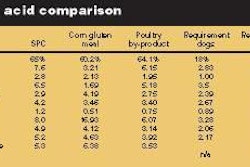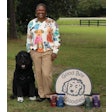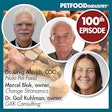"US$14.5 billion in petfood sold in USA."
"German pet market up 2.3%."
"UK petfood data show thriving market."
Recent headlines from Petfood Industry parallel others in a variety of media describing the fast-growing global petfood market.
What's fueling the growth? Some experts point to various categories such as premium and superpremium products, organic/natural petfoods, functional/healthy ingredients and treats.
In my mind, these spring from two key sources:
1. The ever-increasing humanization of pets.
2. Rapid R&D, leading to an explosion of new products.
These in turn point to consumer interest, even frenzy, as the driver of growth.
Full family members
Though I've been with Petfood Industry only a short time, my career includes 13 years of editing and writing for other pet-related publications, mainly for consumers. In this regular column, I hope to add another dimension to the occasional consumer perspective we provide in the magazine and related media.
Besides a background in pet publishing, my qualifications include my daily role as chief servant for my family's 17-year-old cat, Marley. (Lest you think I'm biased, I grew up with dogs and an assortment of hamsters and guinea pigs, plus the occasional frog, turtle or bird my siblings and I "rescued" from the outdoors).
My devotion - some would say indenture - to my cat is not unique, of course. It's just one example of a phenomenon that has been spreading across the United States, Europe and other regions, making its way around the world: Pets are increasingly becoming full members of the family, as well cared for as any human child.
In maturing markets, this translates into higher spending on petfoods, especially products featuring premium, organic or natural ingredients and ones designed to address specific health conditions. According to the US Bureau of Labor, average annual US household spending on petfood increased 45.5% from 1994 to 2004, from US$75.80 to US$110.31 a year.
In developing markets, such as China, the number of pet owners is growing quickly. As their purchasing power increases, these consumers are predicted to spend more on pet supplies, including food.
Feeding a fever
This rise in pet ownership and spending around the world creates a demand that savvy petfood manufacturers and marketers know how to supply. The first six months of this year saw 175 new cat and dog food products, including line extensions. That represented 844 SKUs, nearly matching the total for all of 2005, according to Datamonitor's Productscan Online.
The new product fever doesn't just involve retail goods; it also trickles down to, and is simultaneously fed by, new offerings from suppliers to the industry. To respond to consumer needs and wants, manufacturers turn to their suppliers to help them create specific product features or ingredients. At the same time, supplier innovations are fueling new product development. A current example is the rash of revolutionary new petfood packaging, often aided by groundbreaking production methods and materials.
It all adds up to a lot of growth and a lot of fun for everyone in the industry. Petfood Industry's role is to report on that growth and provide information and knowledge to help you determine how your organization can contribute to and share in it. In addition to the magazine, we do this through our electronic media and our events: Petfood Forum, Petfood Focus on Treats and Petfood Forum Europe, next scheduled for spring 2007. For more information and to subscribe to our free E-newsletters, visit www.petfoodindustry.com.

















